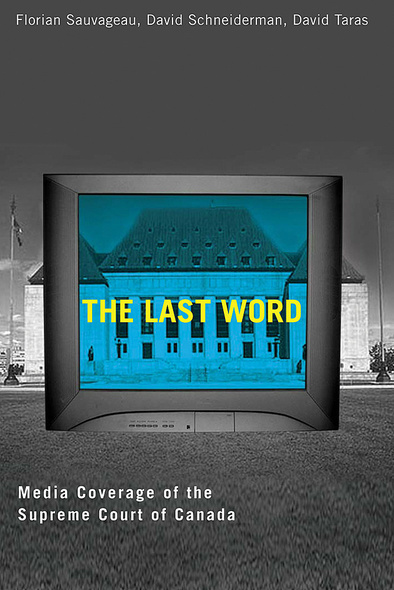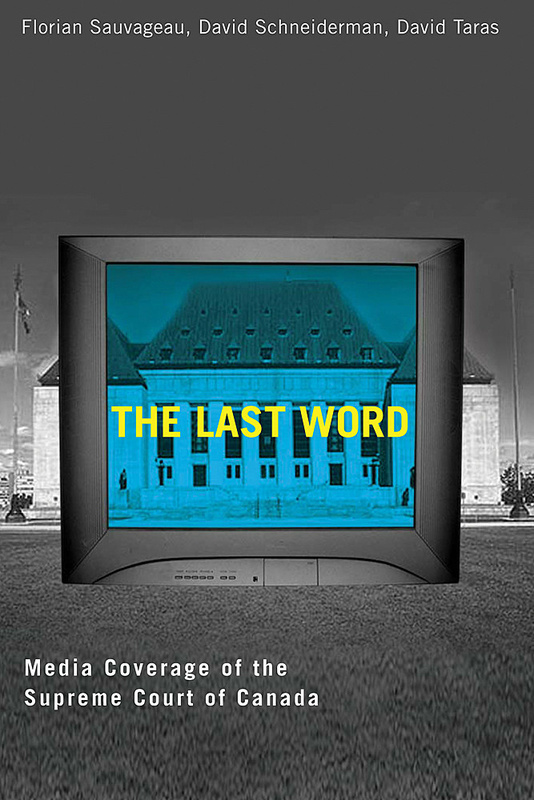
Media coverage of the Supreme Court of Canada has emerged as a crucial factor not only for judges and journalists but also for the public. It’s the media, after all, that decide which court rulings to cover and how. They translate highly complex judgments into concise and meaningful news stories that will appeal to, and be understood by, the general public. Thus, judges lose control of the message once they hand down decisions, and journalists have the last word.
To show how the Supreme Court has fared under the media spotlight, Sauvageau, Schneiderman, and Taras examine a year in the life of the court and then focus on the media coverage of four high-profile decisions: the Marshall case, about Aboriginal rights; the Vriend case, about gay rights; the Quebec Secession Reference; and the Sharpe child pornography case. They explore the differences between television and newspaper coverage, national and regional reporting, and the French- and English-language media. They also describe how judges and journalists understand and interact with one another amid often-clashing legal and journalistic cultures, offering a rich and detailed account of the relationship between two of the most important institutions in Canadian life.
For the first word on a complex subject, they have produced a book that is thought-provoking, authoritative, impeccably researched and grounded in reality.
This is definitely the last word in how the message of a Supreme Court decision is translated and conveyed to its broader publics; it explains the media to the court-watchers, and the Supreme Court to the media-watchers, in a readable, profound, and thoughtful way. Absolutely a must-read.
The Last Word makes a very important contribution to knowledge in an almost non-existent field: I know of no other book published in Canada on this subject in either English or French. It should contribute to the very lively debate about the court, not only in the legal and media milieu, but in the general public as well.
Acknowledments
Judgment Day: A Vignette
Introduction: The Supreme Court Under the Media Lens
1 A Year in the Life of the Supreme Court
2 Equal in Alberta: The Vriend Case
3 Court and Spin Country: The Quebec Secession Reference
4 “Sea of Confusion”: R. v. Marshall
5 “Parents Can Sleep Soundly”: The Queen v. John Robin Sharpe
6 Judges and Journalists
Conclusion: Reporting the Supreme Court through a Political Prism
Appendix A: Interview Questions
Appendix B: Method of Analysis -- Coding Instructions and Sample Code Sheet
About the Authors
Index





